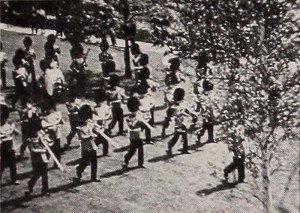
"In Streets of Peace, Lewis B. Sebring, jr., presents a manifold accomplishment in film. Here is a record of the New York World's Fair 1939, but a record which, because of its selectivity, gives the impression of completeness in setting forth a single theme, although the material is both voluminous and varied. Here, also, is an interpretation of the epic idea behind the foreign participation in this great American exposition, the vision of peace, which has since been so rudely interrupted. Mr. Sebring takes his camera through the streets of peace, literally, and we see one after another of the foreign buildings and exhibits at the Fair; we also look at the different national celebrations in the Court of Peace. The visit of the King and Queen of England is recorded in considerable detail. After a scene of children of many lands uniting in a gathering in the Children's World, we find the pointed query as to what these youngsters will make of the "world of tomorrow," and the picture closes with distinguished shots of the United States Building, with its flag and the word "Peace," which appears on its façade. Mr. Sebring's titling is admirable, both in wording and in execution. His Kodachrome exposures have less good moments, but his camera handling is otherwise pleasing. Here is a workmanlike and finished recording of a great international event." Movie Makers, Dec. 1939, 635-636.
"The Suicide Race by Frederick C. Harshbarger, a PSA member of Colton, Calif. Fritz has used his past multi-winning talents to present this most unusual equestrian event that most people don't even know exists, much less have witnessed. This 11-minute 16mm film was awarded an Honorable Mention" PSA Journal, Nov. 1970, 38.
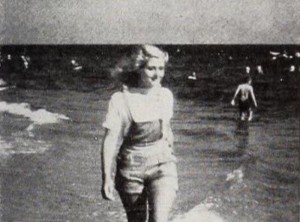
"Sunstruck, by George Mesaros, is a bright genre study of the American beach scene at its colorful, everyday best. There are the sun bathers and the sand babies, the athletes and the antics, and, above all else, the incomparably lithesome and lovely American girl. Mr. Mesaros has caught them all. in sparkling cinematography and with a pleasing selection of camera viewpoints. He has added to these a brace of brief and farcical skits which are well played and well directed. Sprightly music, shrewdly keyed to the varied sequences, rounds out the film's effect. Sunstruck, as suggested in its own foreword, is "gay, glamorous and often goofy."" Movie Makers, Dec. 1944, 496.
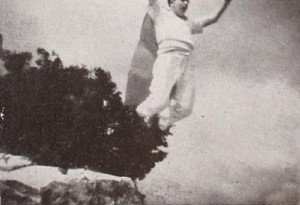
"Donald H. Kelly has cast a comic strip character in Superman Goes West, integrating travel sequences and comedy with great success. While the magnificent cinematographic record of a Western trip is the most engaging factor of the film, the entertainment value of the Superman motif cannot be minimized. The fictional hero is shown to be the consuming interest of a small boy passenger on the trip. The lad proceeds to read Superman comics under varying conditions, despite a changing background of allegedly awe inspiring scenery. One dream sequence with a Superman flavor is a triumph of trick cinematography." Movie Makers, Dec. 1943, 478.
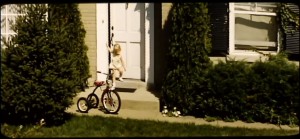
"Short wide screen amateur film made by George Ives, a Chicago Metro Movie Club member, and edited by Kenosha Cine Club member Ron Doerring. A corresponding 1/4" audio reel for this title is also housed at CFA, but has yet to be digitally transferred" Chicago Film Archives.
"Symphony Of The Village: Bert Seckendorf and his Cine Special camera have caught the colorful activities of Greenwich Village in one of the best color documentaries on this subject made to date. This famed New York spot, with its renowned artists, artisans and craftsmen, is revealed in all its gay, Bohemian color as the camera chronicles the activities of sidewalk artists, potters, ceramists, wood carvers and makers of novelty jewelry. The excellent titling knits together all the scenes and sequences into another top-notch picture for which this filmer has become famous in amateur circles." American Cinematographer, May. 1951, 190-2.
"Effective film transitions spark an interesting story of a trip to Texas. The narration indicates careful preliminary research into the geology, history, economic and social conditions of this state." PSA Journal, Dec. 1955, 37.
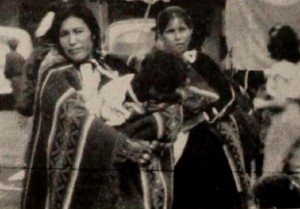
"Edward F. Cross covered an extensive territory of national parks and vacation spots in the Southwest and Western sectors of the United States and has brought back an attractively filmed record of his tour. Unique rock formations have been pictured from well chosen vantage points to make the most of light and shadow. This Land of Ours is climaxed by particularly colorful units in a rodeo's grand parade and a dexterous camera handling of Indian dances. A full narrative indicates careful research to supplement the scenes on the screen." Movie Makers, Dec. 1947, 539.
"Three of Everything, the winner in Class C, is a cross section view of the advantages, equipment and materials the junior high school student finds today in a modern educational institution. Filmed at Mr. Gleason Junior High School in Sunland, Calif., the film depicts the print shop, the wood shop, the metal shop, the foundry, physical education, cooking classes, math and science, and finally graduation. With so much to assist his learning years, the film rightfully concludes that each student has, indeed, had three years of everything" PSA Journal, Sept. 1965, 51.
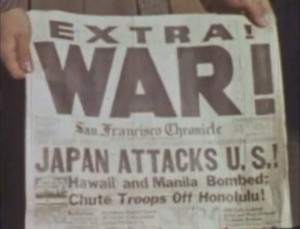
"Amateur film footage shot by Dave M. Tatsuno while he was interned at the Topaz War Relocation Center, the Japanese-American internment camp located in Delta, Utah. The footage dates from 1942-1945, the years that Tatsuno was interned in the camp." Archives West.
Total Pages: 23